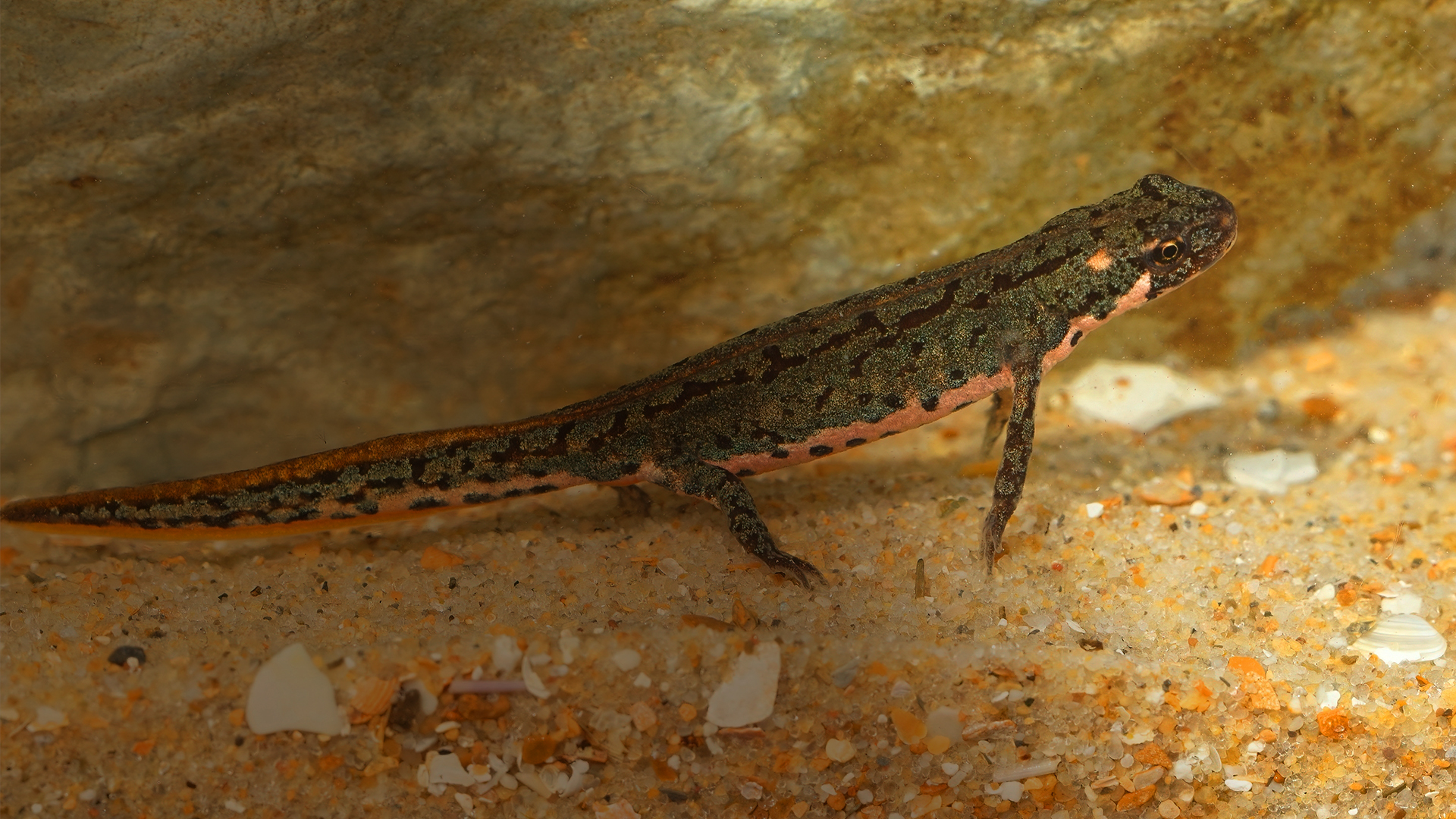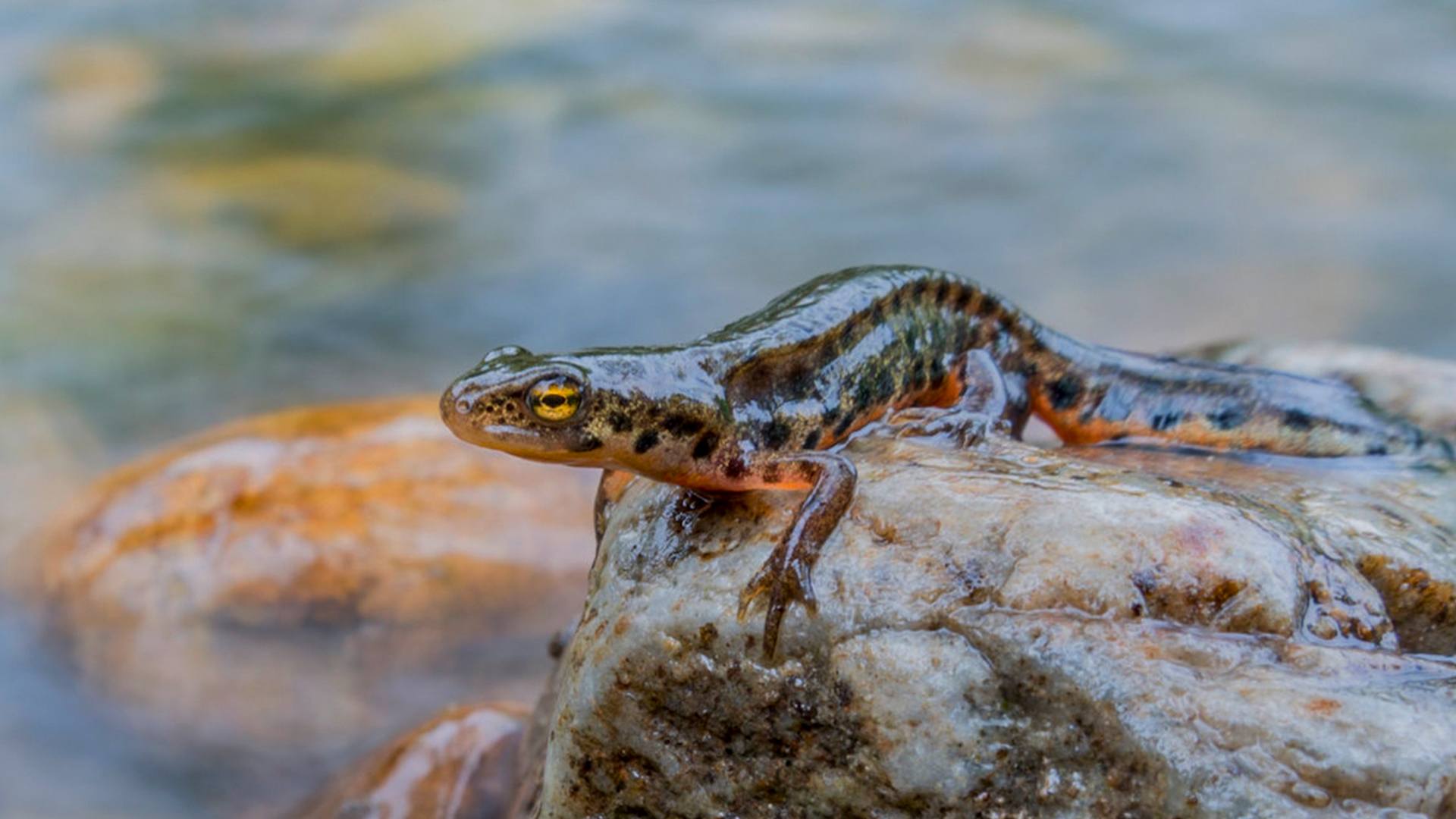Endemic to the Iberian Peninsula, the orange-bellied newt (Lissotriton boscai) is one of several species of fauna that inhabit the properties managed by The Navigator Company. It lives between two worlds, on land and in freshwater, and seeks habitats like forests where there are waterways.
With small, prominent eyes on the sides, the orange-bellied newt is a small amphibian easily recognised for its vibrant colour in the ventral region and can be found all over the country, from the north to the centre and all the way down to the southwestern Vicentine Coast.
Although we can find it in the forests, it has also been spotted in forests, meadows and in little busy agricultural areas, usually close to the water, like ponds, puddles, lagoons, water tanks, dams, reservoirs and streams with weak currents. Above all, such locations must meet the right conditions for their reproduction, which takes place in an aquatic environment and whose season lasts from November to July, depending on the latitude and altitude. That is, in areas with milder temperatures, the aquatic phase begins in late November, while in cooler areas it begins in April.
In fact, reproduction itself is quite an interesting process. In still or low-current waters, after the successful mating courtship the female lays 100 to 250 eggs in the existing aquatic vegetation over several days. These, in turn, will hatch between 10 to 20 days after being laid, depending on factors such as water temperature and the availability of food for the larvae.
When they hatch, between February and June, larvae measure between 8 and 10 mm and can grow up to 20 to 30 mm, and they are born with the rear legs. This allows them to swim quickly to hide near aquatic vegetation, protecting themselves from possible predators. The metamorphosis of the first juveniles is complete in May, although they only reach sexual maturity after 2 to 4 years. During the juvenile phase, the orange-bellied newt has a dark dorsal colouration and an intense yellow or red colouration.
Oddly enough, in the adult stage, the female is usually larger and stronger and has a round shape, measuring between 7 and 9 cm, while the male measures between 6.5 and 7.5 cm. But the differences don’t stop here. Females have a more uniform dorsal design with dark spots and the rear limbs are more developed, while males have a thinner body and dark spots that stand out. During the mating period, the tail presents an evident lateral flattening and develops even a small crest.
In terms of conservation, the orange-bellied newt population seems to be stable in its relevant areas and is classified as “Least Concern”.
Did you know that…
The name of this newt is due to the orange tone of the ventral region, speckled by round and dark side spots. On the other hand, its dorsal colouration can vary between brown, olive green or yellow tones, dotted by some black spots. Sometimes a clearer line runs through the vertebral region.
Depending on the stage of the orange-bellied newt, there are quite marked differences:
– In the terrestrial phase: its activity is more nocturnal; its skin is rough and has a darker and uniform colouration; adults feed on invertebrates of soft consistency, such as earthworms and slugs, while the larvae feed on small crustaceans and larvae of flies and mosquitoes.
– In the aquatic phase or during the reproduction stage: its activity is both nocturnal and diurnal; its skin becomes smooth and clear; adults and larvae feed on small aquatic invertebrates.
In terms of predators, the larvae are prey to the dragonfly larvae, aquatic insects, salamander larvae, and marbled newt adults (Triturus marmoratus), while the adult orange-bellied newt can be caught by water snakes.
When threatened, the orange-bellied newt adopts a defensive posture and arches the body to display the orange colour of its belly. As a defence strategy, it chooses to escape or, alternatively, releases toxic substances through its skin glands.





